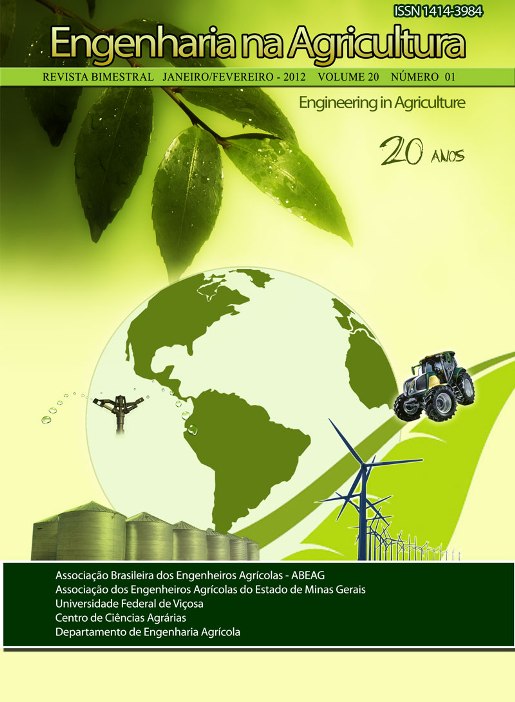AMMONIA CONCENTRATION IN BROILER CHICKEN BARNS FED WITH DIFFERENT DIETS
DOI:
https://doi.org/10.13083/reveng.v20i1.199Keywords:
amônia, poluição do ar, nutriçãoAbstract
The environmental concerns regarding emission reduction of harmful gases has lead to adaptation of novel means of production and new models. The objective of this study was to monitor the concentration of ammonia in an experimental broiler chicken shed, located in the Department of Animal Science, UFV, with 800 birds distributed in 40 boxes, each with 20 birds. The birds were fed five different diets, constituting the treatments, with four replications. T1 - Diet with high protein and minimal amino acid supplementation, T2 = diet based on the concept of optimal protein; T3 - T1 with phytase supplement; T4 - T1 with organic mineral supplement and; T5- combination of T2, T3 and T4. The Concentration of ammonia was monitored with the use of electrochemical sensor (Quest model Safecheck 100). Data were analyzed with help of SAEG computer program, developed by the University Federal of Viçosa (UFV, 2000). Regression analysis was done at 5% probability. In general, the highest concentrations of ammonia were found in the last week before slaughter, depending on the development of birds. Highest levels of ammonia were found when birds were fed T1 and the lowest when fed T2 and T5. The treatments, consisting of ideal protein (T2 and T5), which has better amino acid profile, reduced nitrogen loss, resulting in reduced production of uric acid in bed, thus reducing ammonia emission. The addition of phytase and organic minerals increased availability of protein. The recommended maximum concentration of ammonia inside the shed is 20 ppm, and in none of the treatments the concentration reached above thus limit.Downloads
Downloads
Published
How to Cite
Issue
Section
License
Authors who publish with this journal agree to the following terms:
The author(s) authorize(s) the publication of the text in the journal;
The author(s) ensure(s) that the contribution is original and unpublished and that it is not in the process of evaluation by another journal;
The journal is not responsible for the views, ideas and concepts presented in articles, and these are the sole responsibility of the author(s);
The publishers reserve the right to make textual adjustments and adapt texts to meet with publication standards.
From submission, the author is fully conceding the paper's patrimonial rights to the publication, but retaining the owner of its moral rights (authorship and paper's identification) according to Creative Commons Attribution-Noncommercial.








 Licensed by
Licensed by 